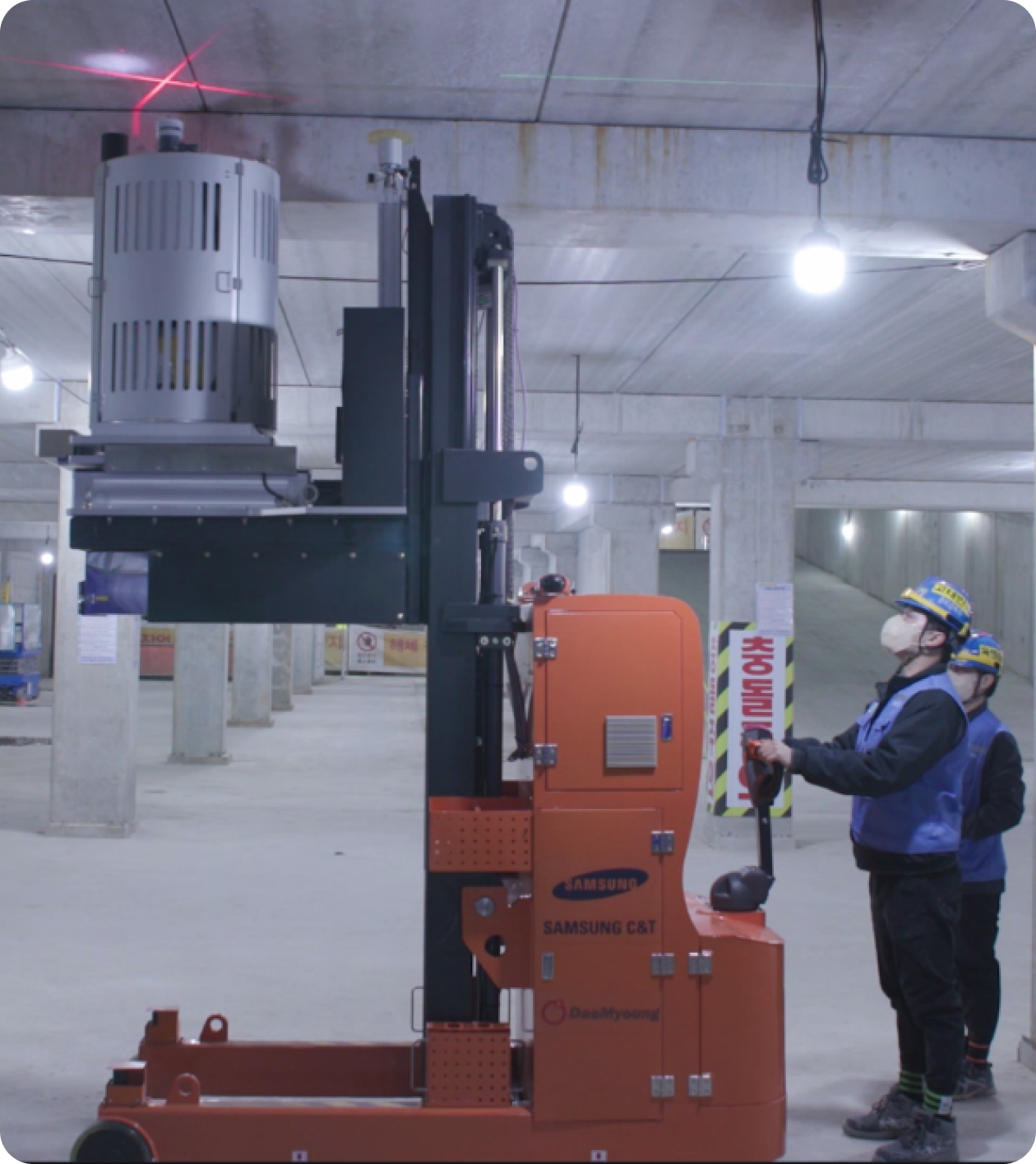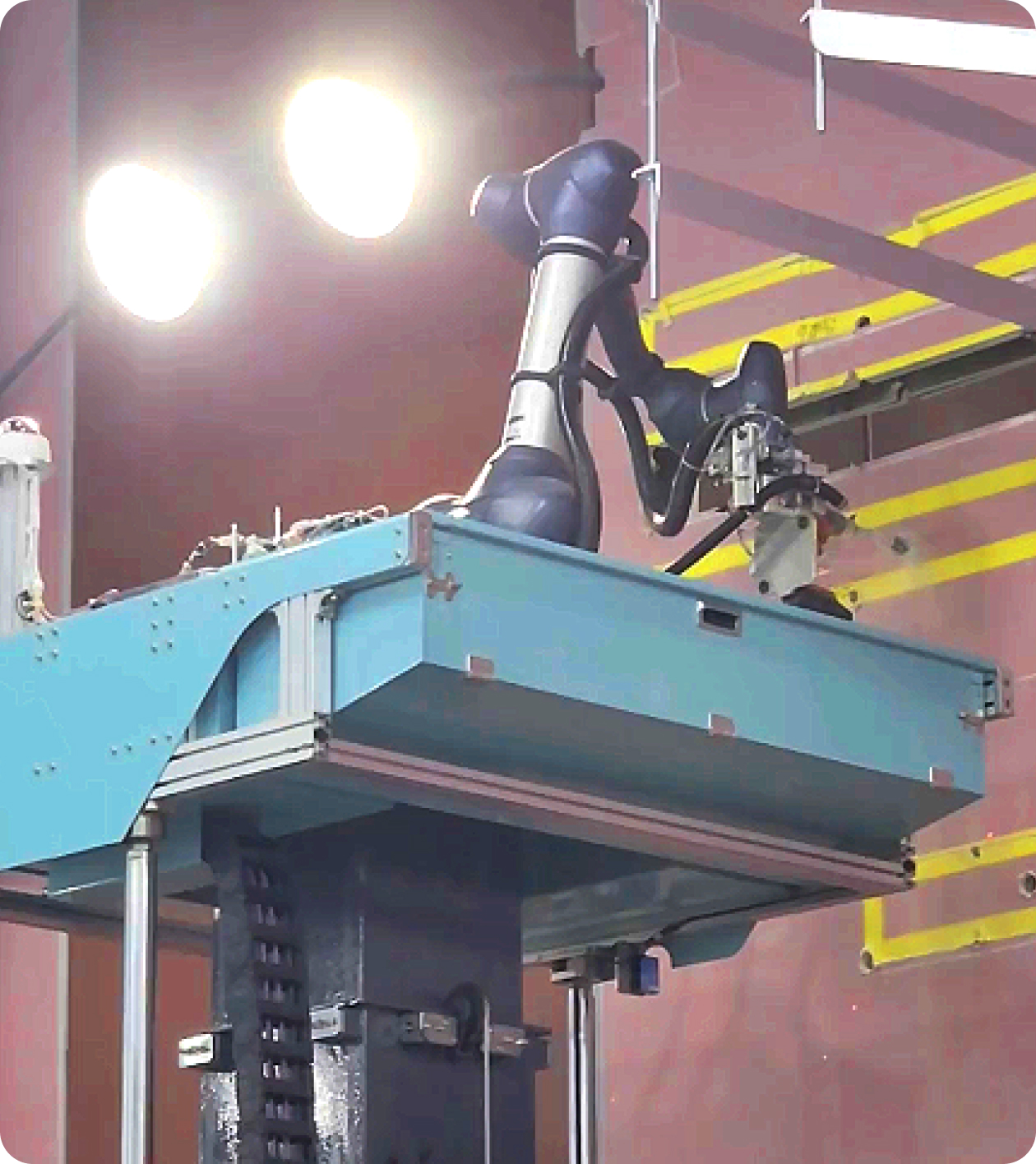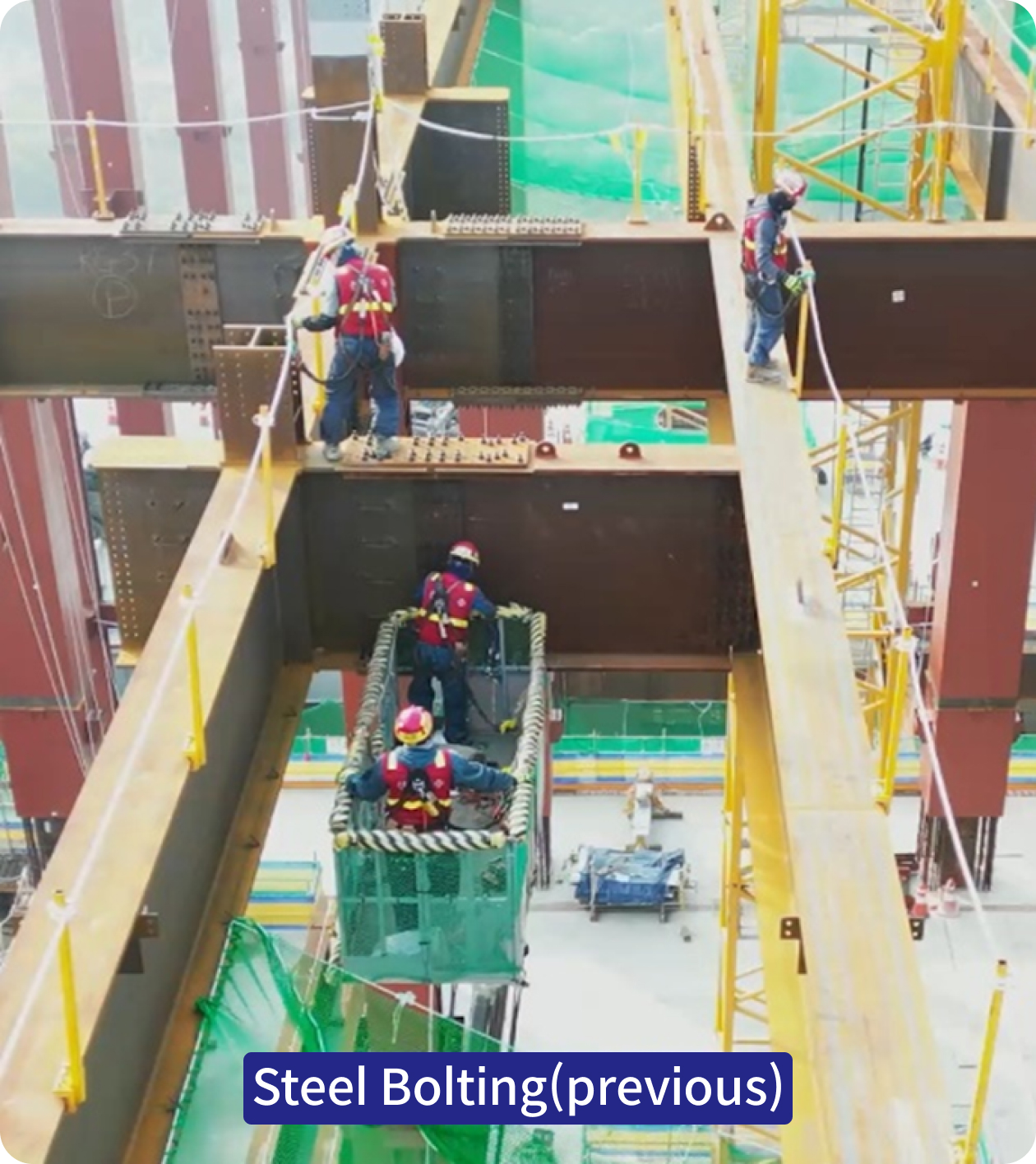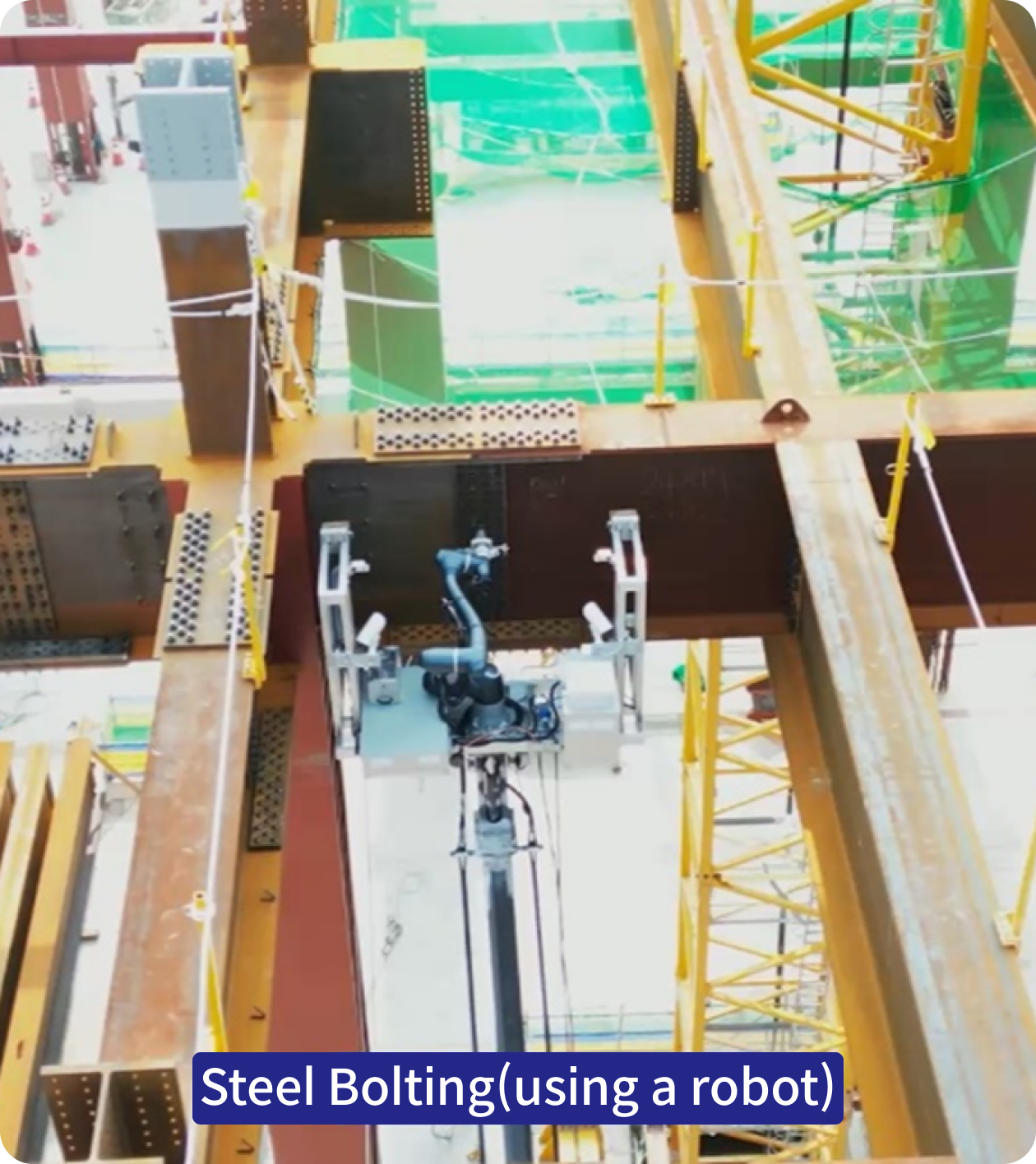Digital Twin
Technology Overview
We have developed a digital twin technology that can be utilized for building operations
-
Development of digital twin
for building operations -
Energy simulation using an AI-based
optimization algorithm - A paradigm shift in building operations through integrated management of energy, asset, and space
![01 빌딩 운영 데이터 복제 실시간 동기화 02 빌딩 형상 복제 디지털 공간 [가상 세계] 03 시뮬레이션 데이터&엔지니어링 기반 분석 예측 실시간 시뮬레이션 04 결과 피드백 빌딩 운영 효율 향상 물리적 공간 [현실 세계] Customized Digital Twin 고객 맞춤형 Digital Twin으로 효율적 빌딩 운영·관리 서비스 제공](/assets/en/images/library/library_skill_img04.png)
Main Features
We aim to enhance customer value by building digital twins that support optimal building energy use and operation
-
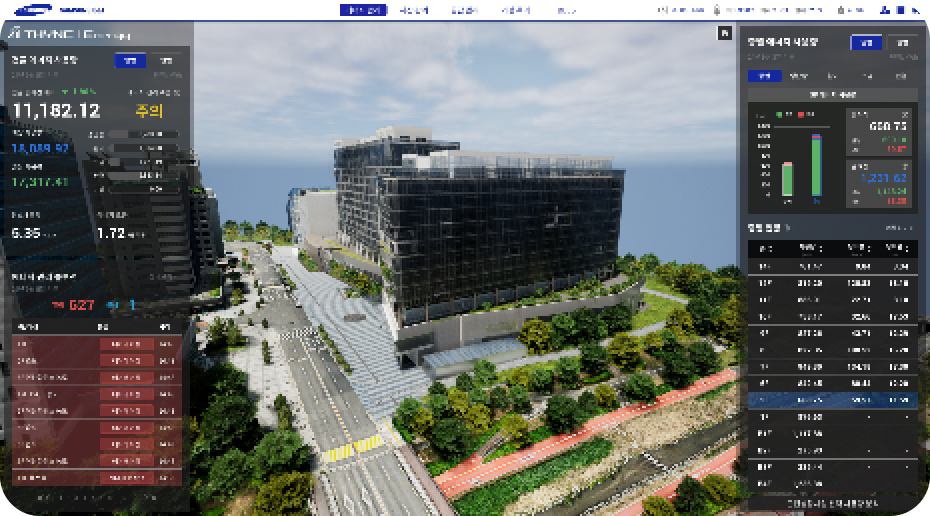
- Energy Management
-
- Assessment of energy waste and potential energy savings by usage (cooling and heating/ventilation/lighting/electric heating)
- Energy reduction and optimization through optimal operations of facilities such as HVAC and cooling/heating
-

- Asset Management
-
- Asset performance preservation and aging prevention
- Efficient maintenance through integrated in-building asset management
-
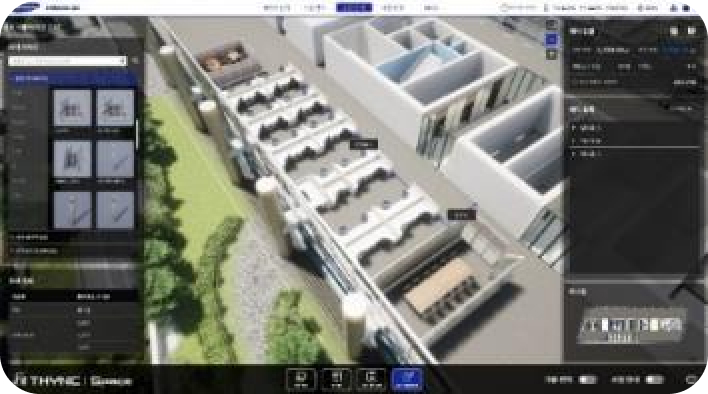
- Space Management
(Layout simulation) -
- Easy and fast optimal space planning using 3D
- Higher virtual area ratios for tenant spaces
- Space Management
-

- Space Management
(Evacuation simulation) -
- Disaster preparedness and occupant safety assurance
- Optimal evacuation planning for emergencies
- Space Management
-
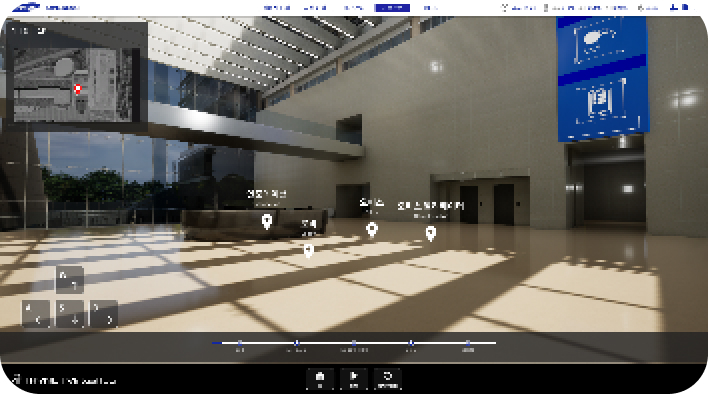
- Virtual Tour
-
- User-friendly virtual building experiences
- Diverse applications including building promotion and guidance
- Virtual Tour
Data-based Smart Healthcare Services
Service Overview
Collecting health information through spatial health data measurements and providing services integrated with home IoT and care solutions
- Individual Units : Daily health measurements, condition analysis, personalized diet/exercise recommendations, and automatic indoor living environment adjustments based on health status
- Community : Automated rehabilitation exercise equipment settings and dementia prevention solutions
- External Collaboration : Telephone health consultations, remote video consultations, and regular health checkups
-

Pilot operation in sister villages
Utilization Plan
We plan to continuously expand our linkages with health data-based services and devices to improve their commercial viability and initiate new construction businesses, including:
- B2C
- Applying a subscription-based service, developed in collaboration with the Hestia team of the Housing Division’s Customer Service department, to residential complexes, and advancing it as a premium home care service in the future.
- B2B
- Developing a product specifically for managing safety and health at construction sites.
- B2G
- Utilizing it as a differentiating factor in the Smart City project, which is currently under contract.

Intelligent Building Energy/Environment Solution
Technology Overview
Our digital twin offers a platform providing customized solutions for energy reduction, comfort enhancement, and emergency response by analyzing the real-time data about building operations. Its core technologies include engineering simulation based on physical models, automatic synchronization of physical and virtual buildings, and real-time collection and processing of building operational data.
Main Features
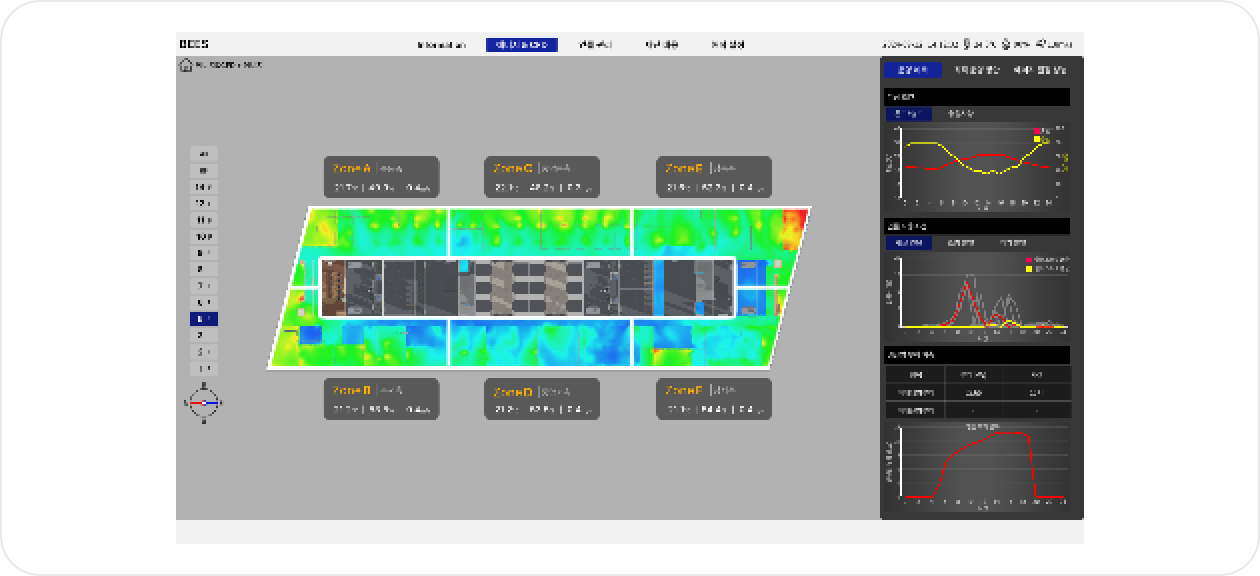
- Main functions
-
- Analysis of building operation patterns (occupancy, energy consumption)
- Cooling/heating and energy demand prediction (by space and time)
- User-tailored optimal cooling/heating guidelines
- Benefits
-
- Minimization of building energy waste
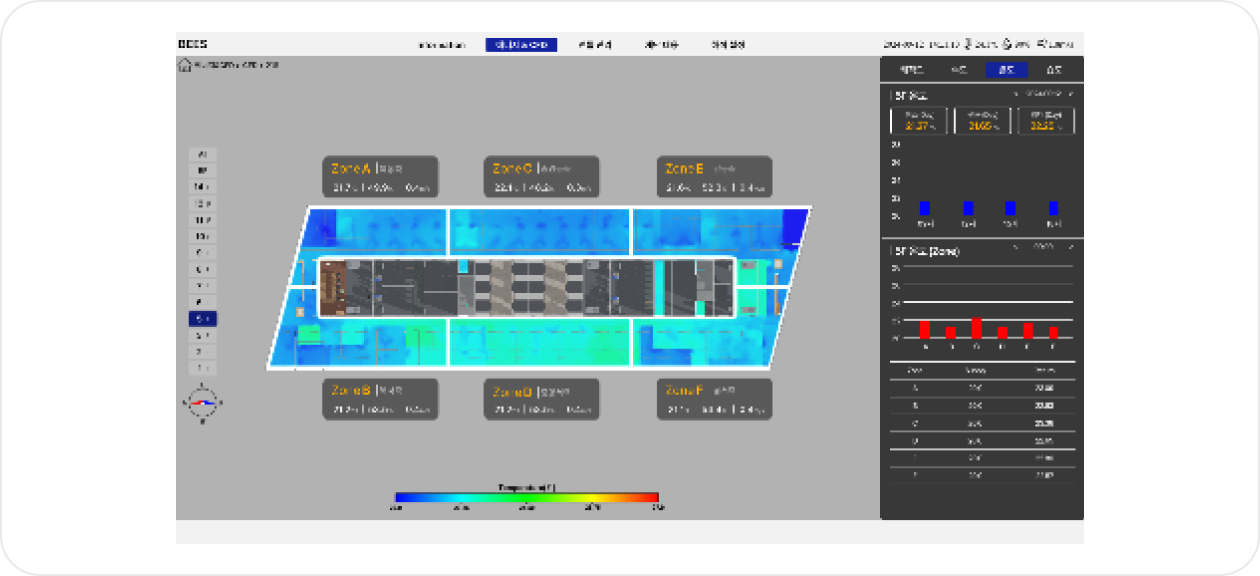
- Main functions
-
- Indoor air quality(temp./humidity) and comfort level prediction
- 3D representation of data about air quality and comfort level
- Occupant comfort assessment/management
- Benefits
-
- Greater comfort for indoor environment leading to higher work productivity
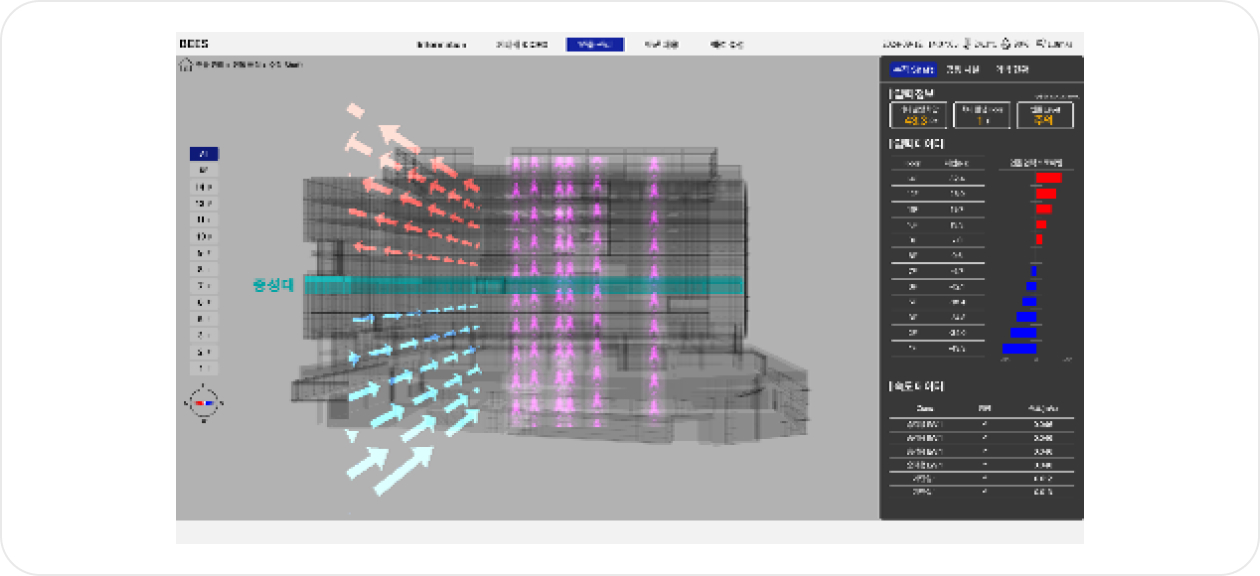
- Main functions
-
- Building stack pressure and air leakage prediction
- Building performance (airtightness, energy loss) assessment
- Optimal HVAC guidelines for stack effect control
- Benefits
-
- Maintenance of initial building performance
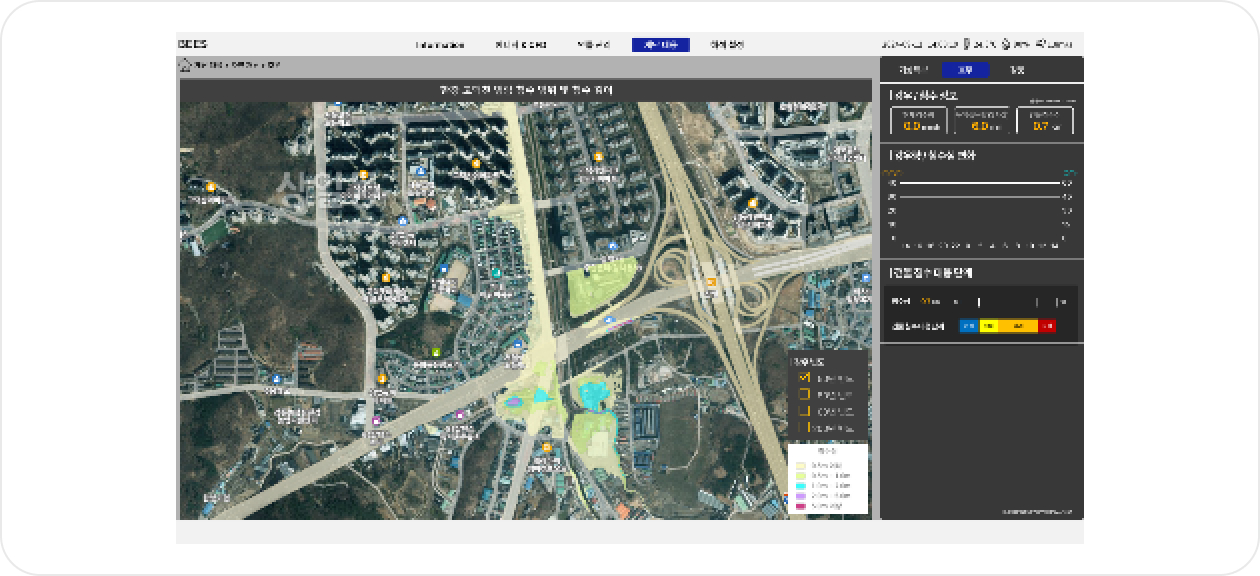
- Main functions
-
- Early disaster signs detection and fire spread prediction
- Building risk prediction (flood, storm)
- Optimal evacuation route guidance for emergencies
- Benefits
-
- Minimization of human and property damages from disasters
Modular
Samsung Smart Modular
Technology Overview
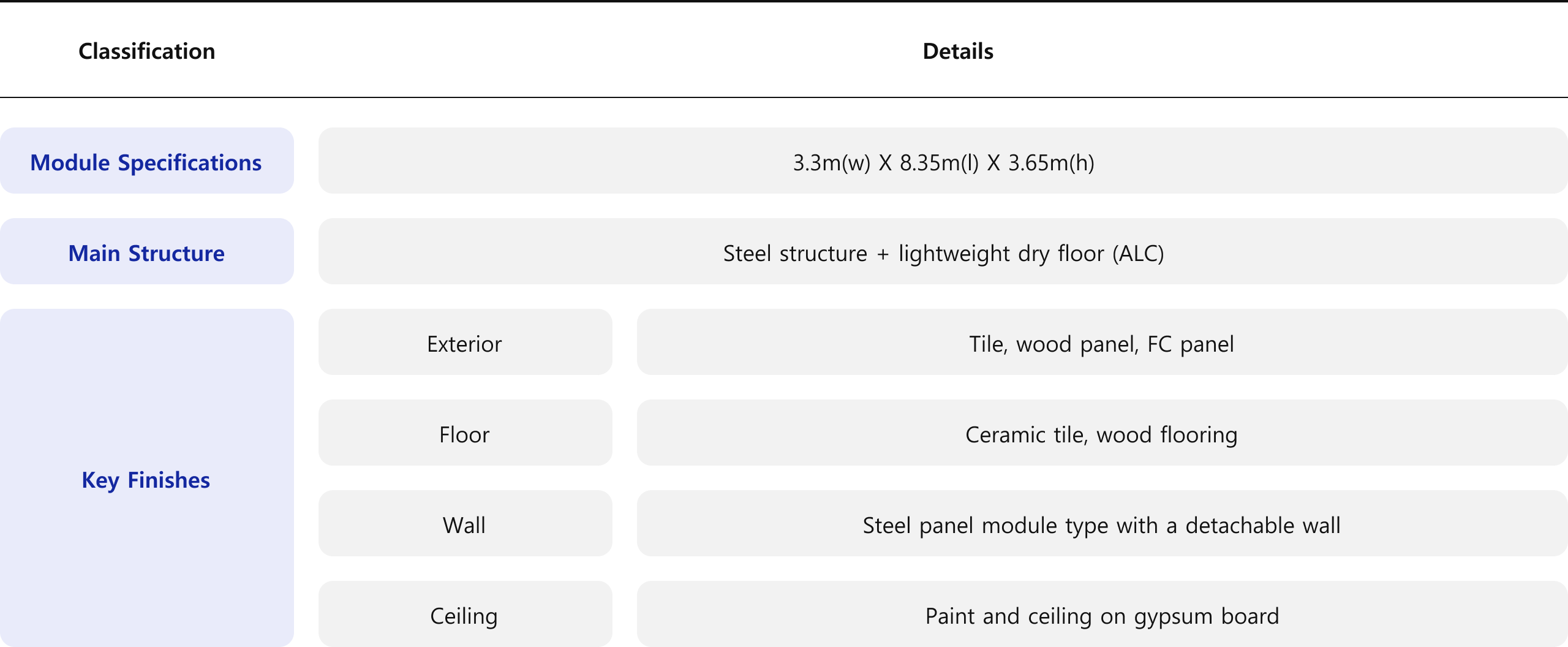
Application Benefits
Validating product competitiveness and utilizing a standard model design through mock-up production for Saudi Arabia

Construction Robotics
Access Floor Grating Installation Robot
Technology Overview
A robot that automates the installation of access floor grating, a high-altitude, hazardous, and repetitive task, using a robotic arm and AMR
- Implementation of skilled worker fingertip technology using vision+force sensors
- Autonomous navigation within the site by recognizing its position
- Acquisition of safety certification for collaborative robot installation workspace
Expected Benefits
- 45% reduction in construction cycle time (compared to 1st generation, reduced from 180 seconds to 100 seconds)
- 43% reduction in workforce required on site (from seven people on one team to four people on one team)
- Prevention of safety accidents such as falls and musculoskeletal disorders
Site Application
- 1st Generation : Applied in Pyeongtaek P3 PH2, Asan 7-2L (Oct, 2021)
- 1st Generation : Applied in Pyeongtaek P3 PH3 (Aug, 2022)
- 2nd Generation : Test operation in Cheonan C Line site (Oct, 2022)
- 2nd Generation : Test operation in Cheonan C Line site (Aug, 2023)
- 2nd Generation : Test operation in Pyeongtaek P4 PH1 site (Oct, 2023)
- 2nd Generation : Test operation in Asan FAB finishing site (Feb, 2024)
Construction Anchor Robot
Technology Overview
A robot consisting of an automated mechanism for all anchor installation tasks and a combined autonomous and manual driving part
- Application of vision, lidar, and laser sensors and automatic dust collection device
- Automation of all anchor installation tasks, including drilling, punching, and nailing
- Safety certification through KCs autonomous safety confirmation report
Expected Benefits
- 18% reduction in construction cycle time (compared to 3rd generation, from 140 seconds to 115 seconds)
- 50% reduction in workforce required on site (from two people on one team to one person working)
- Uniform construction quality through robotic and automated processes
Site Application
- 2nd Generation : Applied in Pyeongtaek P3 Complex and Asan 7-2L sites (Aug, 2021)
- 3rd Generation : Sinbanpo3 (2021), Busan Geoje2 (May, 2022) , Busan Oncheon4 (Mar, 2023)
- 4th Generation : Busan Oncheon4 (Mar, 2023), Hyundai Engineering’s Jangan site (Sep, 2023), Imun1 (Oct, 2023), Jamsil Jinju (planned in Oct, 2024)
Smart Drilling Robot
Technology Overview
A robot for automating hole punching in Module-Rack Brackets for equipment and electrical piping, ducts, and trays
- Automatic identification of punching locations and punching using a robot
- Fine adjustment of punching location through vision automation
- Minimization of hazardous tasks due to high-altitude, vibration, and dust
Expected Benefits
- Approximately 20% improvement in productivity per site (from three people on one team to two people and one robot on one team)
- Approximately 30% cost reduction when using robots (two units) for punching
- Uniform construction quality and elimination of high-altitude and hazardous safety risks
Site Application
- Test operation in Pyeongtaek P3 PH1 site (Nov, 2021)
- Test operation in P3 PH3 site (Aug, 2022)
- Applied in Singapore Civil T313 site (Dec, 2022)
- Test operation in P3 PH4 site (Mar, 2023)
Wall Perforating Robot
Technology Overview
A robot that automates the perforating and removing of utilities such as high-tech facility piping, HVAC duct, and electric cable tray
- Automatic identification of perforating locations and perforation through an automated vision system
- Simultaneous perforation and removal of double fireproof gypsum boards using special tools
- Minimization of hazardous tasks related to working at heights, vibration, and dust
Expected Benefits
- Approximately 30% improvement in construction productivity per site(4 people/team → 3 people & 1 robot/team)
- Consistent construction quality and elimination of safety risks of working at heights and other hazardous tasks
- Greater work flexibility as constant utilization of robots can minimize scaffolding works
Site Application
- Test operation in Giheung NRD-K site (Apr, 2024)
Steel Bolting Robot
Technology Overview
A robot that recognizes steel ST bolts and performs 1st and 2nd bolting automatically using a robot arm and lifting equipment.
- Application of location arrangement/error correction technology to the frequently-changing construction environment
- Development of integrated modules for the mechanical unit including robot arm, controller, and various kinds of sensors
- Establishment of a system for automatic operation and monitoring based on operator-friendly UI/UX
Expected Benefits
- Minimization of safety risks as less work at heights is required (4 times → 2 times)
- Reduction of workforce required per team (5 →3 people) and real-time monitoring of work progress
- Same quality and productivity as that of a skilled human worker
Site Application
- Test operation in Pyeogtaek P4 ST-1 site (May, 2022)
- Test operation and demonstration in P4 ST-2 site(Nov, 2023)




